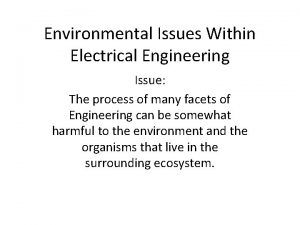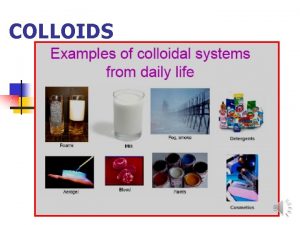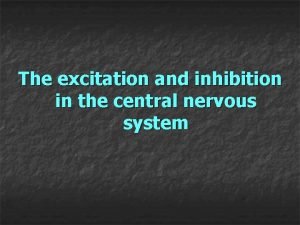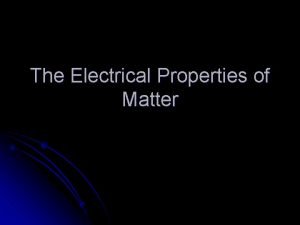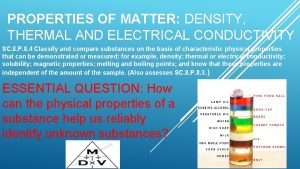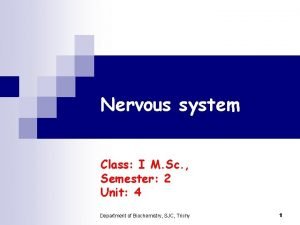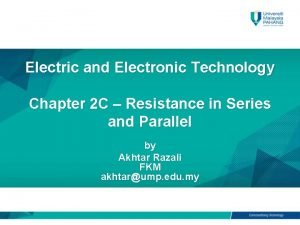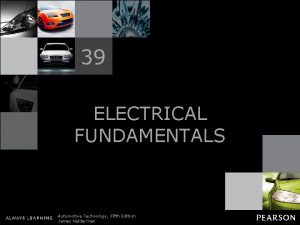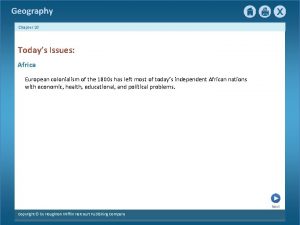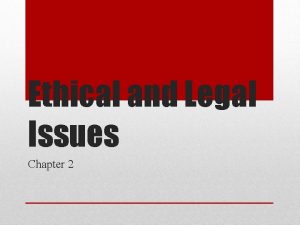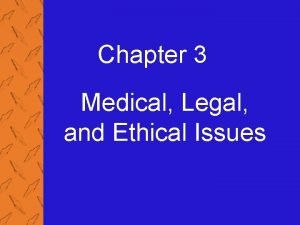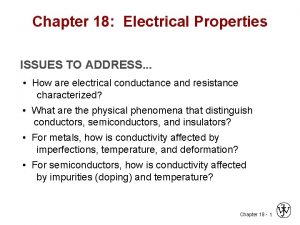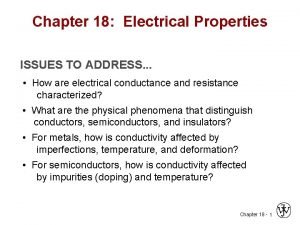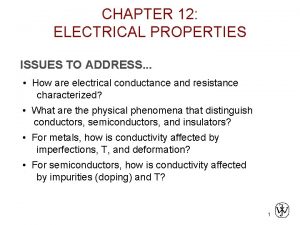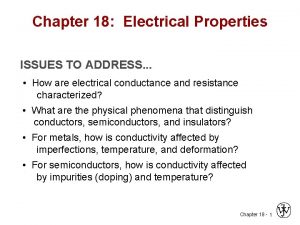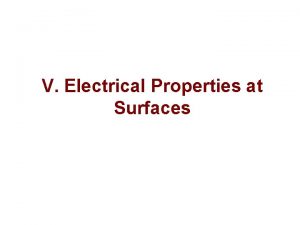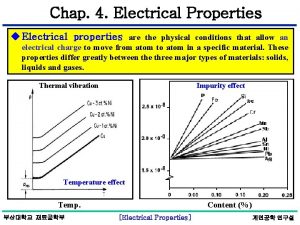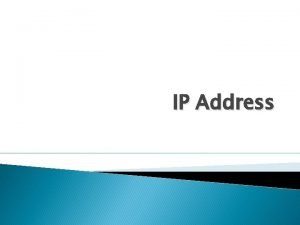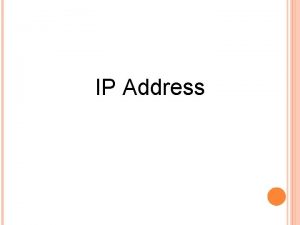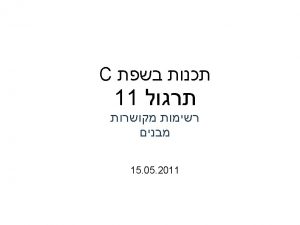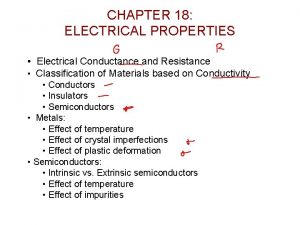CHAPTER 12 ELECTRICAL PROPERTIES ISSUES TO ADDRESS How
















- Slides: 16

CHAPTER 12: ELECTRICAL PROPERTIES ISSUES TO ADDRESS. . . • How are electrical conductance and resistance characterized? • What are the physical phenomena that distinguish conductors, semiconductors, and insulators? • For metals, how is conductivity affected by imperfections, T, and deformation? • For semiconductors, how is conductivity affected by impurities (doping) and T? 1

VIEW OF AN INTEGRATED CIRCUIT • Scanning electron microscope images of an IC: (d) (a) • A dot map showing location of Si (a semiconductor): --Si shows up as light regions. (b) • A dot map showing location of Al (a conductor): --Al shows up as light regions. Fig. (d) from Fig. 18. 25, Callister 6 e. (Fig. 18. 25 is courtesy Nick Gonzales, National Semiconductor Corp. , West Jordan, UT. ) (c) Fig. (a), (b), (c) from Fig. 18. 0, Callister 6 e. 2

ELECTRICAL CONDUCTION • Ohm's Law: DV = I R voltage drop (volts) resistance (Ohms) current (amps) • Resistivity, r and Conductivity, s: --geometry-independent forms of Ohm's Law E: electric field intensity resistivity (Ohm-m) J: current density conductivity • Resistance: 3

CONDUCTIVITY: COMPARISON • Room T values (Ohm-m) -1 Selected values from Tables 18. 1, 18. 2, and 18. 3, Callister 6 e. 4

EX: CONDUCTIVITY PROBLEM • Problem 12. 2, p. 524, Callister 2 e: What is the minimum diameter (D) of the wire so that DV < 1. 5 V? 100 m < 1. 5 V 2. 5 A 7 6. 07 x 10 (Ohm-m) -1 Solve to get D > 1. 88 mm 5

CONDUCTION & ELECTRON TRANSPORT • Metals: -- Thermal energy puts many electrons into a higher energy state. • Energy States: -- the cases below for metals show that nearby energy states are accessible by thermal fluctuations. 6

ENERGY STATES: INSULATORS AND SEMICONDUCTORS • Insulators: --Higher energy states not accessible due to gap. • Semiconductors: --Higher energy states separated by a smaller gap. 7

METALS: RESISTIVITY VS T, IMPURITIES • Imperfections increase resistivity --grain boundaries --dislocations --impurity atoms --vacancies These act to scatter electrons so that they take a less direct path. • Resistivity increases with: --temperature --wt% impurity --%CW Adapted from Fig. 18. 8, Callister 6 e. (Fig. 18. 8 adapted from J. O. Linde, Ann. Physik 5, p. 219 (1932); and C. A. Wert and R. M. Thomson, Physics of Solids, 2 nd ed. , Mc. Graw-Hill Book Company, New York, 1970. ) 8

EX: ESTIMATING CONDUCTIVITY • Question: --Estimate the electrical conductivity of a Cu-Ni alloy that has a yield strength of 125 MPa. Adapted from Fig. 7. 14(b), Callister 6 e. Adapted from Fig. 18. 9, Callister 6 e. 9

PURE SEMICONDUCTORS: CONDUCTIVITY VS T • Data for Pure Silicon: --s increases with T --opposite to metals electrons can cross gap at higher T Adapted from Fig. 19. 15, Callister 5 e. (Fig. 19. 15 adapted from G. L. Pearson and J. Bardeen, Phys. Rev. 75, p. 865, 1949. ) material Si Ge Ga. P Cd. S band gap (e. V) 1. 11 0. 67 2. 25 2. 40 Selected values from Table 18. 2, Callister 6 e. 10

CONDUCTION IN TERMS OF ELECTRON AND HOLE MIGRATION • Concept of electrons and holes: • Electrical Conductivity given by: # holes/m 3 Adapted from Fig. 18. 10, Callister 6 e. hole mobility # electrons/m 3 electron mobility 11

INTRINSIC VS EXTRINSIC CONDUCTION • Intrinsic: # electrons = # holes (n = p) --case for pure Si • Extrinsic: --n ≠ p --occurs when impurities are added with a different # valence electrons than the host (e. g. , Si atoms) • N-type Extrinsic: (n >> p) • P-type Extrinsic: (p >> n) 12

DOPED SEMICON: CONDUCTIVITY VS T • Data for Doped Silicon: --s increases doping --reason: imperfection sites lower the activation energy to produce mobile electrons. Adapted from Fig. 19. 15, Callister 5 e. (Fig. 19. 15 adapted from G. L. Pearson and J. Bardeen, Phys. Rev. 75, p. 865, 1949. ) • Comparison: intrinsic vs extrinsic conduction. . . --extrinsic doping level: 1021/m 3 of a n-type donor impurity (such as P). --for T < 100 K: "freeze-out" thermal energy insufficient to excite electrons. --for 150 K < T < 450 K: "extrinsic" --for T >> 450 K: "intrinsic" Adapted from Fig. 18. 16, Callister 6 e. (Fig. 18. 16 from S. M. Sze, Semiconductor Devices, Physics, and Technology, Bell Telephone Laboratories, Inc. , 1985. ) 13

P-N RECTIFYING JUNCTION • Allows flow of electrons in one direction only (e. g. , useful to convert alternating current to direct current. • Processing: diffuse P into one side of a B-doped crystal. • Results: --No applied potential: no net current flow. --Forward bias: carrier flow through p-type and n-type regions; holes and electrons recombine at p-n junction; current flows. --Reverse bias: carrier flow away from p-n junction; carrier conc. greatly reduced at junction; little current flow. 14

SUMMARY • Electrical conductivity and resistivity are: --material parameters. --geometry independent. • Electrical resistance is: --a geometry and material dependent parameter. • Conductors, semiconductors, and insulators. . . --different in whethere accessible energy states for conductance electrons. • For metals, conductivity is increased by --reducing deformation --reducing imperfections --decreasing temperature. • For pure semiconductors, conductivity is increased by --increasing temperature --doping (e. g. , adding B to Si (p-type) or P to Si (n-type). 15

ANNOUNCEMENTS Reading: Core Problems: Self-help Problems: 0
 Memory swaping
Memory swaping Explain how dishes on a menu address environmental issues.
Explain how dishes on a menu address environmental issues. Eduqas hospitality and catering
Eduqas hospitality and catering Electrical engineering environmental issues
Electrical engineering environmental issues Tyndall effect is an optical property
Tyndall effect is an optical property Properties of nerve
Properties of nerve Electrical properties of matter
Electrical properties of matter Conductivity
Conductivity Sjctrichy
Sjctrichy Extensive and intensive examples
Extensive and intensive examples Physical properties and chemical properties
Physical properties and chemical properties Chapter 11 electrical engineering
Chapter 11 electrical engineering Electrical technology chapter 2
Electrical technology chapter 2 Chapter 39 electrical fundamentals
Chapter 39 electrical fundamentals Chapter 20 today's issues in africa
Chapter 20 today's issues in africa Ethical and legal issues chapter 2
Ethical and legal issues chapter 2 Medical legal and ethical issues chapter 3
Medical legal and ethical issues chapter 3



